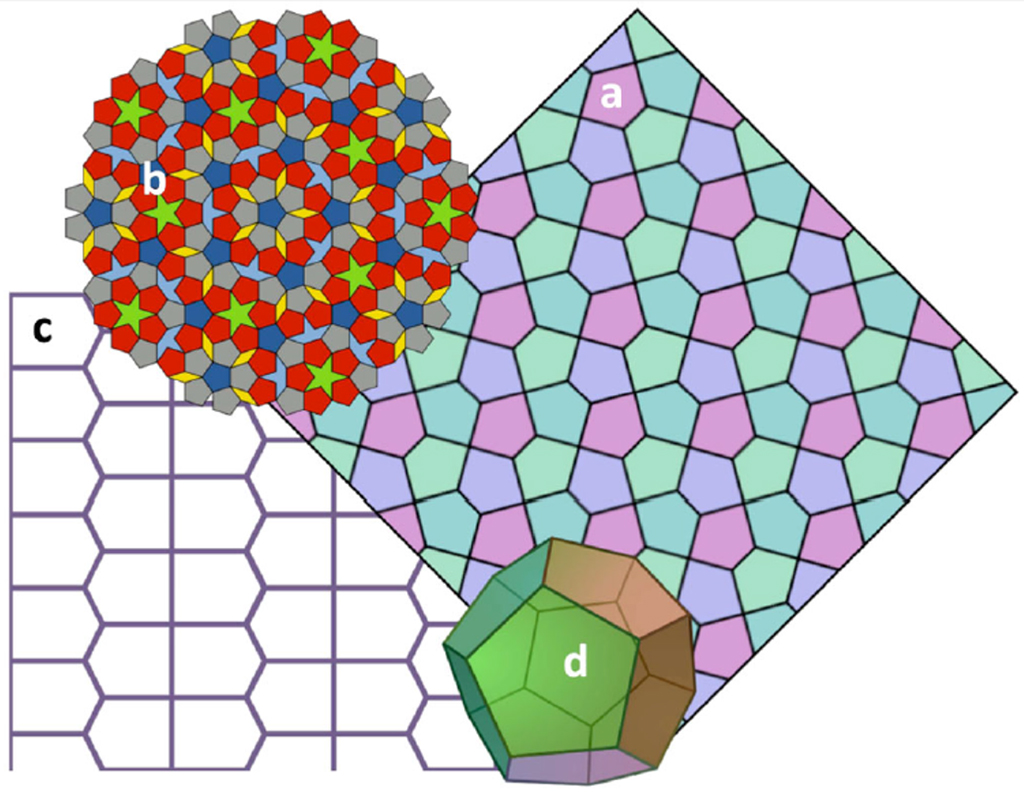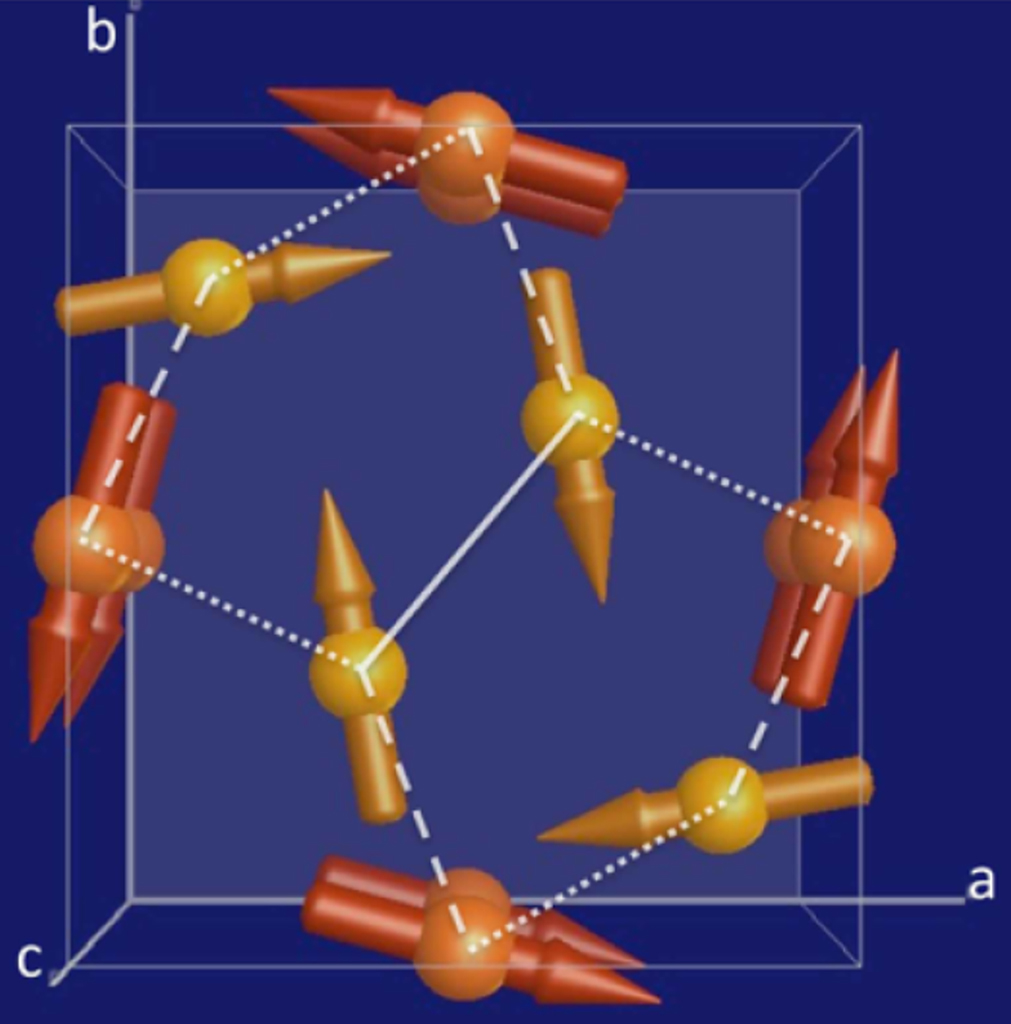Vassil Skumryev – Universitat Autònoma de Barcelona (UAB)
The pentagon, a five-sided polygon, is an old issue in mathematical recreation. It forms the faces of the dodecahedron, one of the platonic solids whose shape is reproduced in biological viruses and in clusters. Contrary to triangles, squares or hexagons, it is impossible to tile a plane with congruent regular pentagons; the tilings must involve additional shapes to fill the gaps – fig.1. There exist, however, several possibilities of tessellation with non-regular pentagons, a famous one being the Cairo tessellation whose name was given because it appears in the streets of Cairo.
Using neutron diffraction, several years ago we found that the Fe magnetic moments of Bi2Fe4O9 at the two distinct crystallographic sites, Fe1 and Fe2, form a pattern, which constitutes the first materialization of pentagonal magnetic structure – fig.2. Because of its odd number of bonds per elemental brick, this so-called Cairo pentagonal lattice is prone to geometric frustrated magnetism arising when all pair interactions are not simultaneously satisfied. The peculiarity of this non-collinear structure arises from the complex connectivity of the pentagonal lattice, a novel feature compared to the well-known case of triangle-based lattices, opening new perspectives in the field of magnetic frustration. In this case, both the frustration and the complex connectivity are at play and there is no macroscopic degeneracy of the ground state. In a recent inelastic neutron scattering study [1], the magnetic interactions in the pentagonal lattice and their hierarchy were determined. It unveils various facets of unconventional magnetism, with distinct behaviors associated with the two inequivalent Fe sites of the pentagonal lattice. The Fe1 ions produce strongly coupled antiferromagnetic pairs of spins (dimers) separated by much less correlated Fe2 spins, dominating the correlated paramagnetic state (above the temperature of magnetic order). Whereas in the ordered magnetic state, the pairs of Fe2 spins produce original spin dynamics, associated with protected local motions, coexisting with dispersive spin waves. This result should be very general in systems with similar lattice topology.

